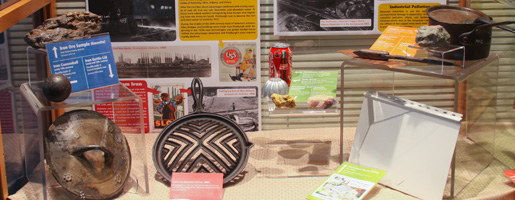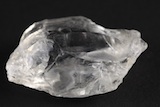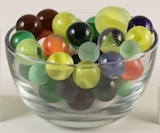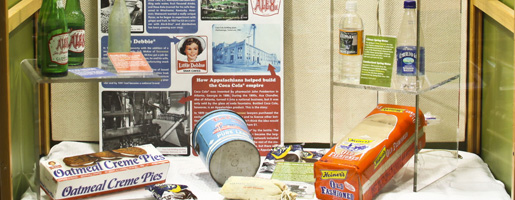
Growing up in rural Yancey County, North Carolina, I often took walks down to Prices Creek, which ran at the bottom of my driveway. I would sift through the silt to find shining flecks of what my dad told me was called “mica.” I would return home with fistfuls, most pieces no larger than a small skipping stone.

A drive through the next county over, Mitchell County, may at first glance seem like just another town surrounded by waves of Blue Ridge Mountains. But there are train tracks running parallel to the road and the tree-covered landscape changes suddenly to the exposed rock of an open pit mine for mica and quartz. The gem-mining tourist attractions in the town of Spruce Pine are an indication that this is a mining area, but North Carolina has little coal.

The Spruce Pine mining district produced quartz used in the manufacture of every computer chip in the world in 2009, according to the BBC. I have lived eighteen years in this particular region and I have passed by the open mines plenty of times. I even knew that they were mining quartz and mica, but I did not realize that many electronic manufacturers around the world depended on the wellspring of mineral resources from what I considered an obscure place. My encounter with the “Made in Appalachia” exhibit clued me in.
The “Made in Appalachia: Beyond Cabins, Crafts, and Coal” exhibit in the Loyal Jones Appalachian Center Gallery displays Spruce Pine quartz and mica specimens, along with many other well known products—ranging from carpet to copper to Little Debbie Snacks—that are, unbeknownst to many, from the Appalachian region. One has only to walk through the exhibit to see the diverse skills and stories that come together in this collection.
It is interesting to note how heavily a product will influence its locality, from the population to the name of a town. Some towns are in existence only because of the product, as seen in the aluminum production story of Alcoa, Tennessee. In some areas, the resources have named the towns, like in Saltville, Virginia.
Just as quartz has effects that reach much farther than North Carolina, so do many other Appalachian products. For example, marble quarried in north Georgia is used in such familiar national landmarks as Lincoln Memorial, which is just one of the many ways that Appalachia travels outside of itself.
On the flip side, Appalachia brings the outside into itself. The diversity of items produced in this region indicates an even greater diversity among the hands that produced them. Many glassmakers in West Virginia were from France and Belgium. Early salt furnaces in the 1800s typically used African American slave labor. Oak Ridge, Tennessee—the “Secret City” in Appalachia for producing nuclear material for atomic bombs during the 1940s—drew in workers, primarily women, from the immediately surrounding mountains. The Birmingham, Alabama iron factories used convicts and employed previous agricultural workers. With all of these different people, products, and skill sets, Appalachia became a cultural melting pot.

This cultural spectrum is brought to light in the “Made in Appalachia: Beyond Cabins, Crafts, and Coal” exhibit, which is part of a multi-year project of the Loyal Jones Appalachian Center to expand the general perception of the Appalachian region. The Center is engaged in diversifying the artifacts collection, the majority of which are examples of the folk culture (brooms, quilts, woodwork, etc.). Such cultural items have become the region’s logo, but a browse through “Made in Appalachia” will quickly erase that generality in the mind of a visitor. Rather than primarily consisting of isolated, wholly self-sufficient homesteads, Appalachia has a transnational character and impact. The Center is expanding its teaching collection beyond the region’s iconic objects to capture this transnational attribute so seldom associated with Appalachia. Maybe recognizing where a Coca Cola bottle, snack cake, collection of marbles, or piece of mica came from will help us see this side of Appalachia, too.
Caroline Hughes, Curatorial Associate, Editorial Associate [Fall 2014]
